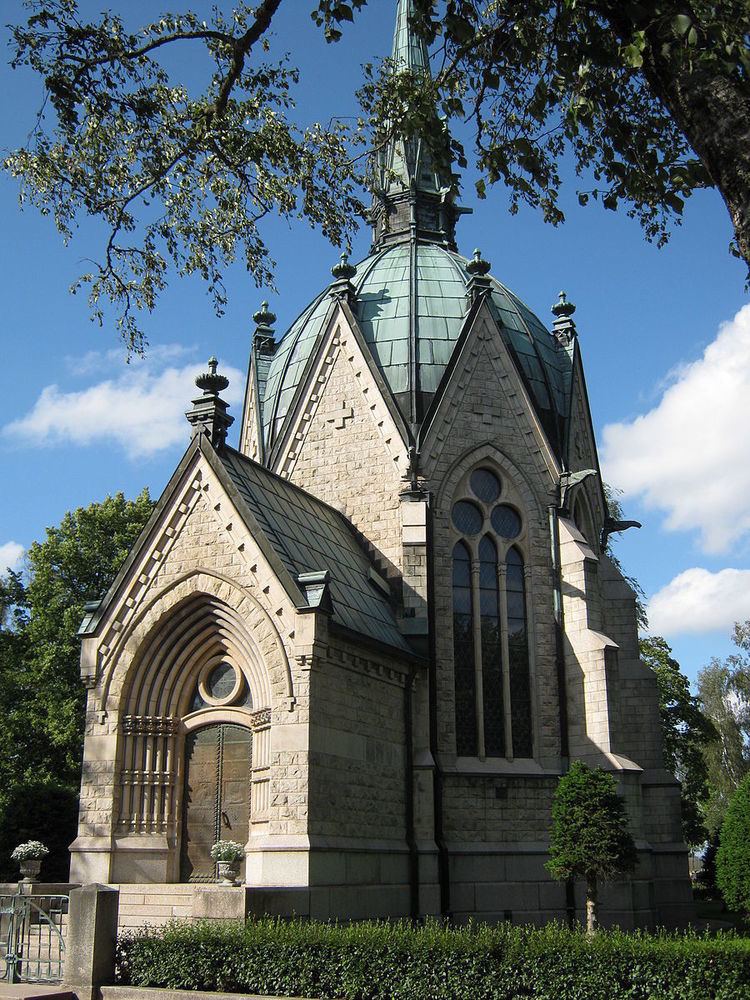Location Pori, Finland Built 1901–1903 Architect Josef Stenbäck | Elevation 13 m (43 ft) Phone +358 2 6238700 | |
 | ||
Address Maantiekatu 33, 28120 Pori, Finland Hours Closed today ThursdayClosedFridayClosedSaturdayClosedSunday12–3PMMondayClosedTuesdayClosedWednesdayClosed Architectural style Gothic Revival architecture Burials Sigrid Jusélius, Fritz Arthur Jusélius Similar Rosenlew Museum, Central Pori Church, Rakennuskulttuuritalo Toivo, Luontotalo Arkki, Tarvaspää | ||
Juselius Mausoleum (Finnish: Juseliuksen mausoleumi) is one of the most famous sights in Pori, Finland, located at the 1884 opened Käppärä Cemetery. It is the only mausoleum in Finland and was completed in 1903.
Contents
Sigrid Juselius
The mausoleum was built by local businessman Fritz Arthur Jusélius (1855–1930) for his daughter Sigrid (1887–1898) to be her last place of rest. Sigrid died of tuberculosis at the age of eleven. Her sarcophagus is placed in the basement of the mausoleum. It can be seen from the upper floor. The sarcophagus is made of white Italian marble and designed by architect Jarl Eklund.
Fritz Arthur Jusélius himself is also buried in the mausoleum on its side wing. His two wives have their resting places outside the mausoleum. The Sigrid Juselius Foundation was established in 1930 to promote medical research in Finland.
Mauseoleum
Juselius Mausoleum was built in 1901–1903. It was planned by Josef Stenbäck in the Gothic Revival style. The famous Finnish artist Akseli Gallen-Kallela painted the interior, including frescoes "Kevät" (Spring), "Rakennus" (Construction), "Tuonelan joella" (By the River of Tuonela), "Hävitys" (Destruction), "Talvi" (Winter) and "Syksy" (Fall). Original frescoes were destroyed by fire in 1931. They were repainted by Gallen-Kallela's son Jorma Gallen-Kallela in 1933–1939 and the mausoleum was opened again in 1941. Decorations include Masonic symbolism since Akseli Gallen-Kallela and F.A. Jusélius both were dedicated Freemasons.
Another famous Finnish artist Pekka Halonen painted the frescoes on the vestibule. They were destroyed as well, but never repainted. Door of the building is made of bronze and it was constructed by Finnish sculptor Alpo Sailo.
Juselius Mausoleum and the surrounding Käppärä Cemetery are listed as Cultural environments of national significance by the Finnish National Board of Antiquities.
